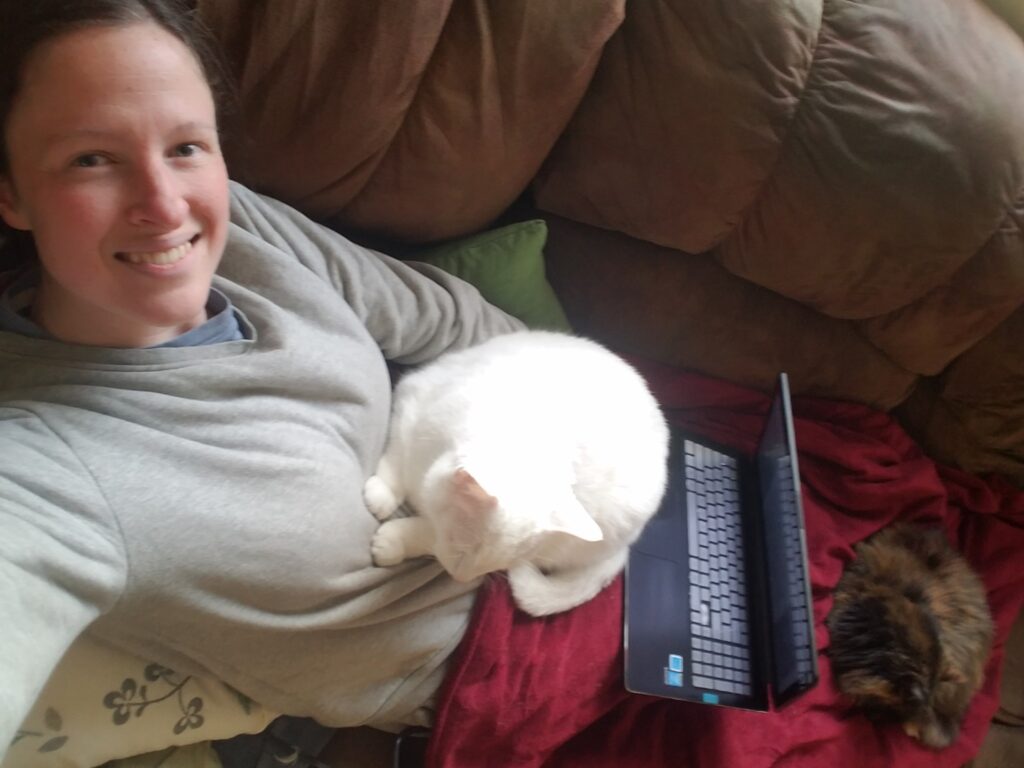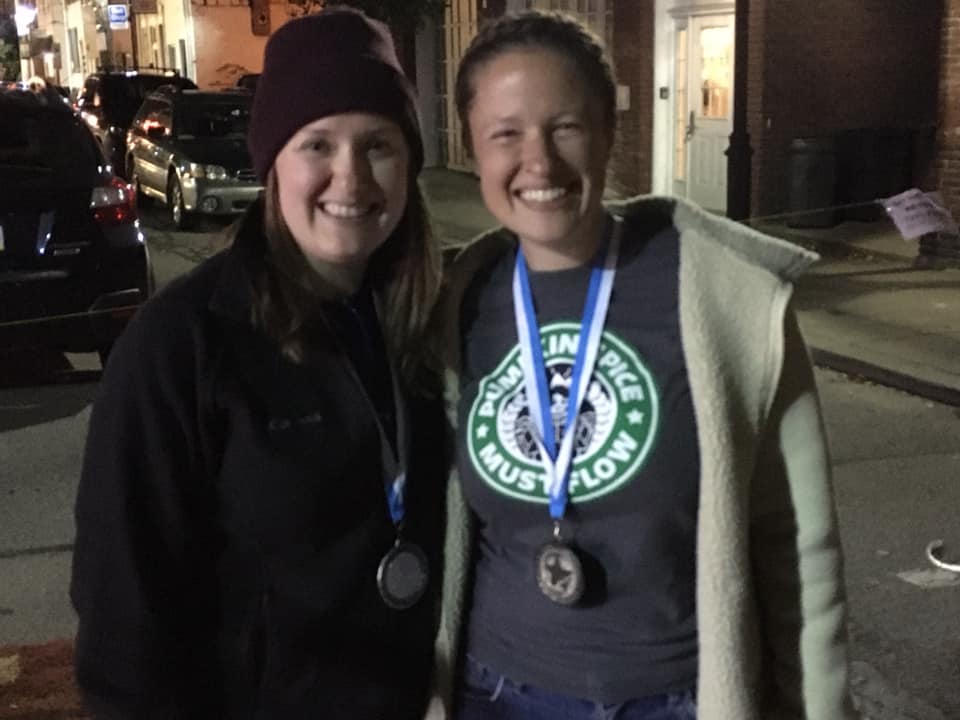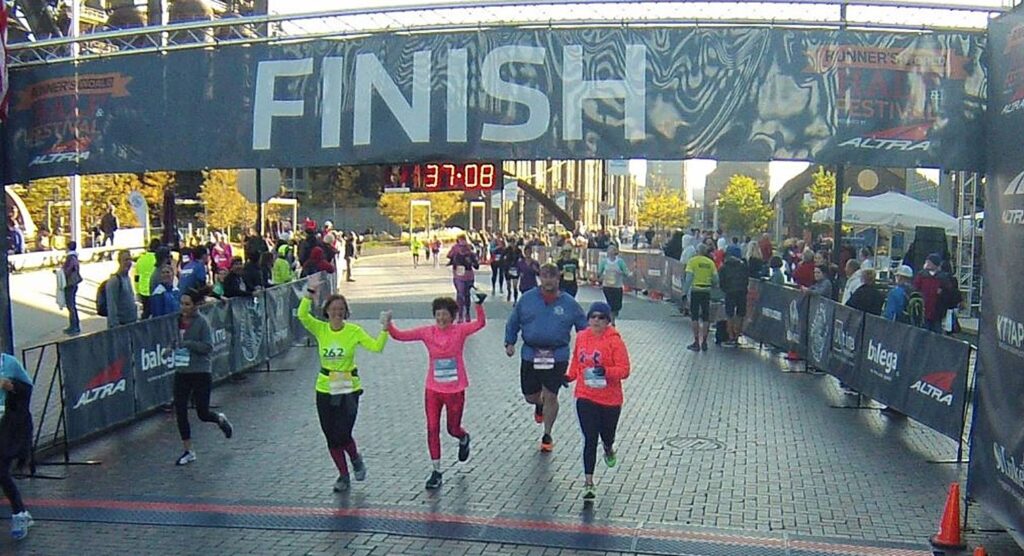Part 1 – Recognizing the Need
After returning from two weeks of vacation in August,[1] I wanted to make sure I retained some semblance of balance in my life to handle stress in a more sustainable way than how I usually do. I usually wait until I’m right at the edge of burnout and then take a long vacation to recover. I have always been a very all-or-nothing type person, working hard and playing hard. I recognize that I regularly push myself until I’m exhausted (and/or sick), and then I collapse until I’m too bored to be unproductive any longer. (I recognize it, but I have done very little to change it.)
Since the beginning of quarantine, I have really fallen in love with quiet, unstructured time with Christian and the kitties. It has been such a surprising revelation for me that I have frequently lamented the thought that my isolation was rapidly coming to an end and my schedule would fill back up with social obligations.[solitude] If there is one tiny silver lining to the fact that COVID-19 does not seem to be going anywhere anytime soon, it is that I still have a valid excuse for not having a jam-packed calendar… but as quarantine drags on, it does seem that it’s about time to work on building healthy habits so that once enforced isolation is no longer a thing, I can maintain the level of down-time that I need/want.

The Best-Laid Plans…
As I’ve written about before, my pre-pandemic work/life balance was only “balanced” because I had to leave work to accommodate the large number of activities I had waiting for me nearly every weeknight. Now that I don’t have evening activities that require me to leave work, it is easier for work to extend into my evenings, as late as I let it. And now that work takes place at home, it is much harder to create a psychological separation between the two. I have noticed that difficulty in effectively delineating work time and home time for both myself and my coworkers over the last year and a half.
Creating psychological distance from work when you’re at home is vitally important. For years I never thought I’d be able to work from home because one of the things I really appreciated every day was my commute – even when it was an hour or more, going into the city. I found I not only liked but needed that transition time between home and work. Even if I worked exceedingly long hours, which I did at some jobs, when I went home, I was home. It is much harder when work is at home.
About three months into quarantine, I realized that sitting on a couch all day with my laptop balanced on a suitcase in front of me was not a long-term office solution. I cleared out enough space in our second bedroom to fit a folding table and a chair, where I could leave my computer and notebooks when I was done for the day, where I could close the door and separate work space from home space. I recognize the value of this luxury and that not everyone has it, but since then, I’ve regularly migrated back to sitting in the living room while working. I’m not entirely sure why, but I think part of it is that I prefer feeling like I’m at home to feeling like I’m at work.

Several months into quarantine, recognizing that I would work as long as I needed to, forgetting to eat or spend time with my family, I realized that I needed to designate (and protect) time for myself during the day. At the beginning of this calendar year, I scheduled “no meetings” times in my work calendar so I could go out and run at lunch and come back to work refreshed, both physically and mentally. The idea was that this trick would also help me in my New Year’s resolution of hitting 500 running miles for 2021. (As with most New Year’s resolutions, I think that lasted about six weeks before I gave in to scheduling conflicts and just resigned to being in meetings all day every day.)
The moral of this story is that in order to make working from home as sustainable and healthy as possible, I need some way to transition between work time/space and home time/space, and I need to build in a mechanism to keep me from working too late – because there will always be more that needs to be done, and as I tell my team “you can’t help the company if you’re burned out.” So what do people do to keep from getting burned out? Hobbies, of course.
“You do this for fun?”
As the pandemic ramped up and we locked down, I removed many social activities and obligations from my schedule. I’ve kept what I consider to be a small number of hobbies, probably about half of what I used to do, but I still feel incredibly busy and almost drained by the things I’ve decided to keep. I think that part of the issue stems from the fact that my remaining hobbies are structured to the point that they require productivity, even though my own goals and deadlines are somewhat arbitrary and certainly self-inflicted.

Because I love doing research and writing, I’ve created an obligation for myself by manufacturing a weekly deadline for this blog. Because I love the blend of art and science involved in brewing, I create complex recipes that require time, effort, and attention. Because I love gardening, I added 1,000 square feet of garden beds where the grass may never give up. Because I love how meditative running is, I (at least in pre-pandemic times) sign up for distance races that require massive sacrifices of free time for preparation, followed by an objective, quantitative judgment of my performance at the end.
My hobbies, though things that I love, are still defined by productivity, and that makes me feel tired after long enough. Even setting aside time for physical activity, which we know is the best way to reduce stress, isn’t something I can maintain without the external framework of a pending race. I work very well when up against a deadline, but in the absence of structure, I’m completely unproductive. And being unproductive is something I seem to be incapable of without massive amounts of guilt because all I can think about is how time that could be spent doing something from my endless to-do list.
The moral of this story is that I need to find some kind of activity that I enjoy but that doesn’t have a productivity metric attached to it… and one that I will make time for and allow myself to do guilt-free. That strikes me as an impossible list of criteria to satisfy.

Project Management at its finest
I am writing this post only five weeks after returning from that two-week vacation, during which I truly unplugged from work. The trip was fun, it was mentally restful, and I returned with renewed enthusiasm for my job, but taking frequent two-week vacations is neither financially / environmentally sustainable nor feasible in a pandemic. I recognize that I need to be able to find a better balance that incorporates periods of genuine, unproductive down-time, even if it’s so I can be more consistently productive when I need to be.
We just wrapped up a strategic planning process at work, complete with a detailed action plan for how to achieve the high level strategy set forth by our board. This former business student knows the saying “if it’s not measured, it’s not managed,” so I’m going to find a way to hold myself accountable. I will project manage myself into un-productivity if I have to.
In the post(s) to come, we will explore the details of both active and passive unproductive activities and the benefits they can provide. We will start off with something that’s a little more familiar to me and comes easier (meditation) and then move on to something that I expect to pose a significant challenge (play).
~
Do you have trouble setting aside restorative time for yourself? What tips and tricks do you have for making and keeping that time?
Thanks for reading!
[1] https://radicalmoderate.online/the-importance-of-down-time-part-1/
[2] https://radicalmoderate.online/414-days-of-solitude/
0 Comments